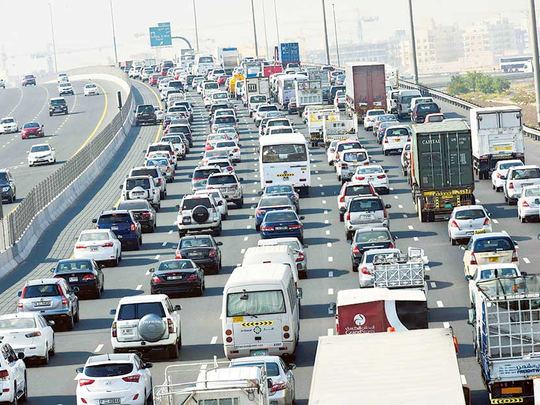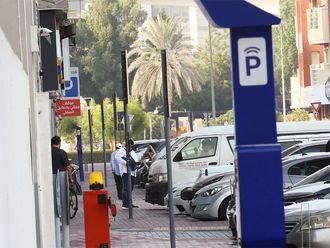
Dubai: Developing road infrastructure and expanding the public transport network will not be enough to reduce traffic congestion and improve public transport ridership in Dubai, a traffic and transport expert pointed out recently.
Speaking to Gulf News on the sidelines of Gulf Traffic conference and exhibition, Nadeem Shakir, Technical Director, Transport Planning, at Aurecon Group said that while roads and the transport network have continued to grow in Dubai, poor spatial distribution has not helped its cause.
At 600 vehicles per 1,000 people, Dubai has one of the highest car ratios in the world, higher than the mega cities like New York and London, which have 305 and 213 vehicles per 1,000 people respectively.
“One of the reasons Dubai has such high density of vehicles is due to lack of mixed use neighbourhoods. There are also fewer affordable housing solutions, which is forcing people to drive all the way to Deira, Sharjah and Ajman, adding to congestion,” said Shakir, who is part of the team developing Dubai’s new transport masterplan.
According to a survey conducted by his firm, the average trip time per person in Dubai is 35 minutes, which is way higher than the average in European cities.
The survey reflects that the average distance a person travels is 14 kilomtres and is all set to reach 22km by 2030, if factors causing the congestion are not mitigated.
Around 450,000 vehicles enter Dubai on an average daily, with the city welcoming 40,000 vehicles in the morning peak hour every day.
Shakir said that, apart from improving the infrastructure and transport network, policies have to formulated to reduce Dubai’s dependence on private vehicles.
The number of vehicles in Dubai has doubled in the last eight years from 740,000 at the end of 2006 to more than 1.5 million this year, an average annual increase of 8 per cent, which is also among the highest in the world.
The majority of these vehicles — around 33,500 in the morning peak hour and 370,000 on an average weekday — enter Dubai from the northern emirates, where residents find housing more affordable.
“Increase in affordable housing clusters like the planned South Dubai closer to industrial and commercial enclaves will help reduce travel distance and time. This in addition to expansion of infrastructure and adoption of smart transport solutions will help reduce congestion and improve the share of public transport,” said Shakir.
He also suggested staggered working hours and internalised road systems as some of the solutions to reduce traffic congestion.
The current share of public transport in Dubai is 15 per cent and Roads and Transport Authority (RTA) aims to take that figure up to 30 per cent by 2030.
In comparison, cities like New York with 67 per cent, Paris with 62 per cent, and London with 60 per cent have a much higher public transport share.
Shakir believes that Dubai will need to go beyond 30 per cent in the next 15 years to overcome future challenges. “The public transport share Dubai has is best in the region but is still way below the best cities in the world. The target itself is less than half of London. So it is necessary to adopt policies and smart solutions that will help exceed the target of 30 per cent by 2030,” he added.
According to the survey, one of the key factors that discourages use of public transport is the weather in Dubai.
The survey found that the average comfortable walking distance in Dubai is 500 metres compared to 1.5 kilometres in cities with better weather conditions.
“One of the key challenges in Dubai is to overcome the high temperatures that increases dependence on private vehicles, which is another big challenge. The authorities are exploring various options to overcome these challenges by trying out autonomous cars, electric pods and Hyperloop,” he said.
Dubai’s RTA has a plan to expand the rail network to 421 km by 2030, while options like the superfast Hyperlook network, autonomous transport systems and marine transport designed to navigate the creek and the coast are being considered.











